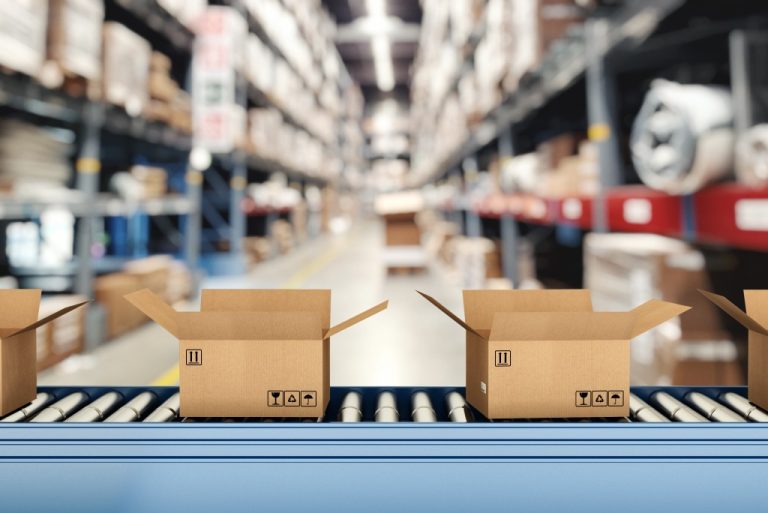Ah, the versatile pallet rack—used in warehouses worldwide to store goods efficiently and appreciated for its strength, durability, and ease of use! It is estimated that 80% of all industrial materials are stored on pallet racking. Stacked together, there is about $9 billion worth of new and used pallet racking bought every year.
Pallet Racking Tips for Improving Productivity
As it is easy to assemble and efficient, it is no surprise that pallet racking has been universally adopted. However, just because it is in broad use, does not mean it is always being used for peak productivity. These tips can help you optimize your operation.
Optimize Layout
A poor warehouse layout can hurt operations even with the right racks, tools, and team members.
To determine optimal warehouse organization, conduct regular product rotation analyses to establish patterns for in-demand and long-term storage items. Using these insights, designate accessible racks for faster-moving goods and reserve less convenient areas for slower-moving products.
Travel time costs money, too. It eats up as much as 50% of labor costs in some warehouses, so a highly organized warehouse configured to reduce travel time makes a big difference.
Choose the Right Pallet Racking
Whether you are choosing new or used pallet racking, make sure you make the best choice for your warehouse’s operations. The type of products you store, how much inventory you have, and how frequently inventory turns over makes a considerable difference.
Common types of pallet racking include:
Drive-In: Single Deep Pallet Racking
Forklifts load pallets into deep channels that are only accessible from one end. This creates densely packed storage lanes for facilities requiring high-density dedicated storage of uniform items. It allows for maximizing cube utilization per pallet position. However, limitations exist for access and inventory variability.
Drive-Thru: Double-Deep Pallet Racking
Deep lane racking with pallet channels can also be accessible by forklifts at both ends. This enables easy first-in-first-out loading and unloading workflows. It also provides flexibility for changing stock units.
Though density per lane is less, overall storage density remains high while improving inventory variability compared to single-entry systems.
Push-Back Pallet Racking
For warehouses holding many different items, consider cascading roller racking. These systems utilize inclined rollers and allow pallets to push back in their lanes, effectively storing two to six pallets deep. This maximizes storage density, especially for facilities with diverse pallet sizes and SKUs.
However, it comes at the expense of limited access compared to standard selective racking.
Proper Spacing and Configuration
Consider redesigning pallet racking configurations with wide aisle ways to promote safer and less obstructed forklift movement. This facilitates faster order picking, receiving, and inventory checks.
Deep lane storage methods involve far-end stacking and shuttle cart technology to make full use of warehouse depth. These solutions maximize horizontal storage space and minimize unproductive aisle footage. Some warehouse and distribution centers employ movable aisle systems. These use electric motors to shift entire pallet rows to instantly create wider aisles when needed.
You can dramatically improve storage density by installing vertical lifts, cantilevers, mezzanines, and multi-level racking systems. These solutions allow for greater warehouse cubic footage usage and enable more efficient forklift navigation. You also get easier visibility into storage.
Better Inventory Management
For more efficient warehouse operations, consider implementing inventory management systems like “First-Expired, First-Out (FEFO)” and “Last-In, First-Out (LIFO).” FEFO ensures that the items closest to expiration are picked first while LIFO prioritizes recently-arrived inventory.
Manage Your Pick and Store Operations
For high-velocity order fulfillment, implement order-picking optimizations like zone skipping which allows workers and forklifts to temporarily skip aisles that are not needed for current orders. This results in faster travel between pick locations.
Optimizing Your Pallet Racking
In warehouse operations, it takes a combination of people, processes, technology, and equipment, all working efficiently to optimize productivity. Any area that is not functioning well will slow down operations and increase labor and holding costs.
Conesco Storage Systems is a leading supplier of pallet racking, warehousing, and material handling equipment to optimize your space. Leveraging a national, diverse industry network, Conesco provides new and used material handling equipment, logistics, engineering and permitting, and warehouse planning services.
We can help you design the optimal layout and make sure you have the right type and configuration of pallet racking while always placing a premium on workplace safety. Manufacturing, eCommerce, warehousing, cold storage, food and beverage, and 3PL—we do it all, including specialized tech like AS/RS and robotics.
Call the Conesco team at (303) 690-9591 or request a consultation online to discuss your pallet racking needs.



